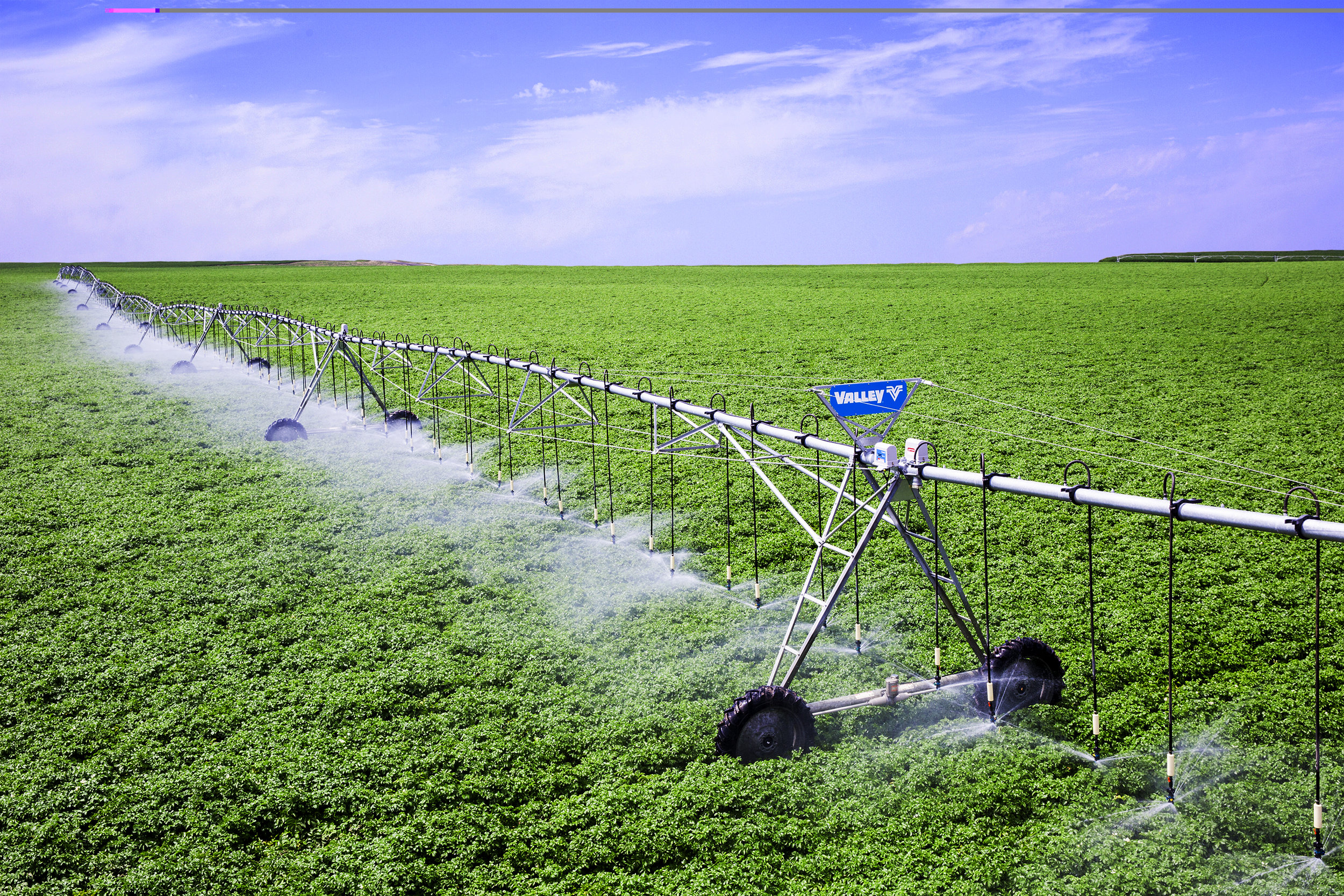A valley irrigation system is a type of irrigation system that uses controlled flooding to distribute water over a large area. Valley systems are typically more expensive to build and maintain than other irrigation systems, but they can provide significant benefits in terms of output and water storage.
Valley irrigating systems work by directing the water into ditches or canals that run along the valley floor. The floodwaters from the river or stream are channeled through these ditches, which cause the water to rise and flow over the land in a controlled manner. This process helps to distribute water evenly over a large area, providing crops with the necessary moisture and nutrients.

Image Source Google
Valley systems are popular in areas where rainfall is low or unreliable. They can help to ensure crop production during periods of drought by providing supplemental watering. Additionally, valley systems can help to store excess water during periods of surplus rainfall, allowing it to be used later when needed most.
The benefits of using a valley irrigation system are many. Here are just a few:
1. Efficiency – A valley irrigation system is more efficient than traditional methods, requiring less water to produce the same amount of crop yield.
2. Durability – Valley irrigation systems are built to last, with sturdy construction that can withstand the elements and heavy use.
3. Customizable – A valley irrigation system can be tailored to fit your specific needs and requirements, making it perfect for any size farm or ranch.